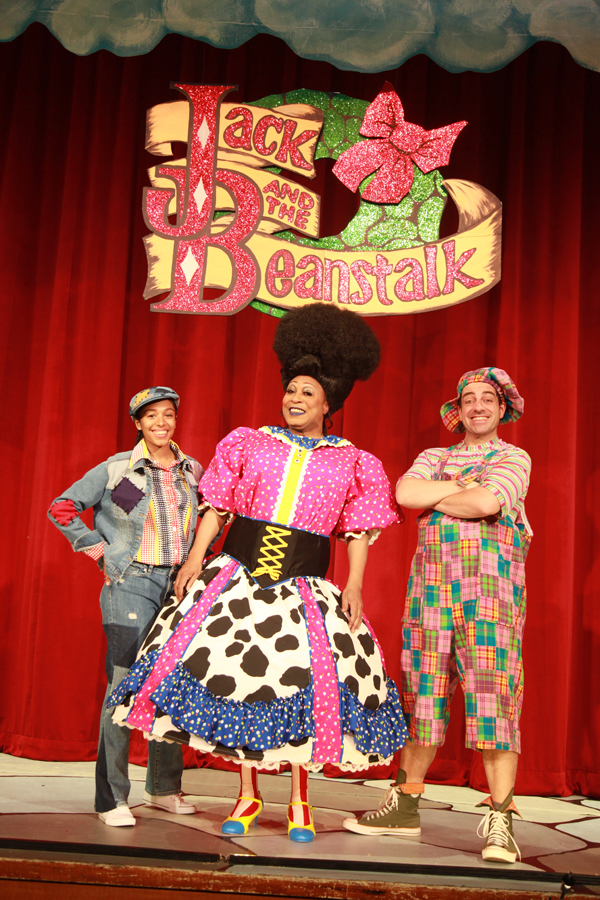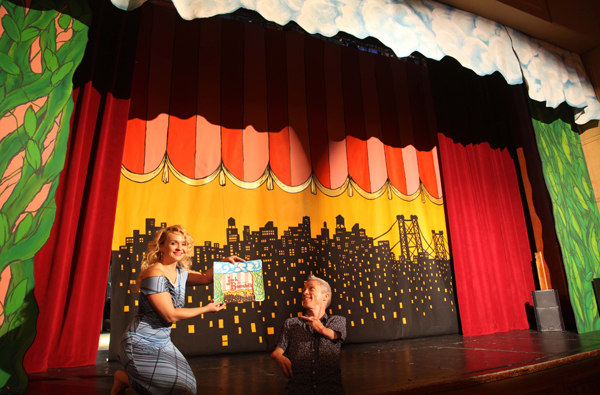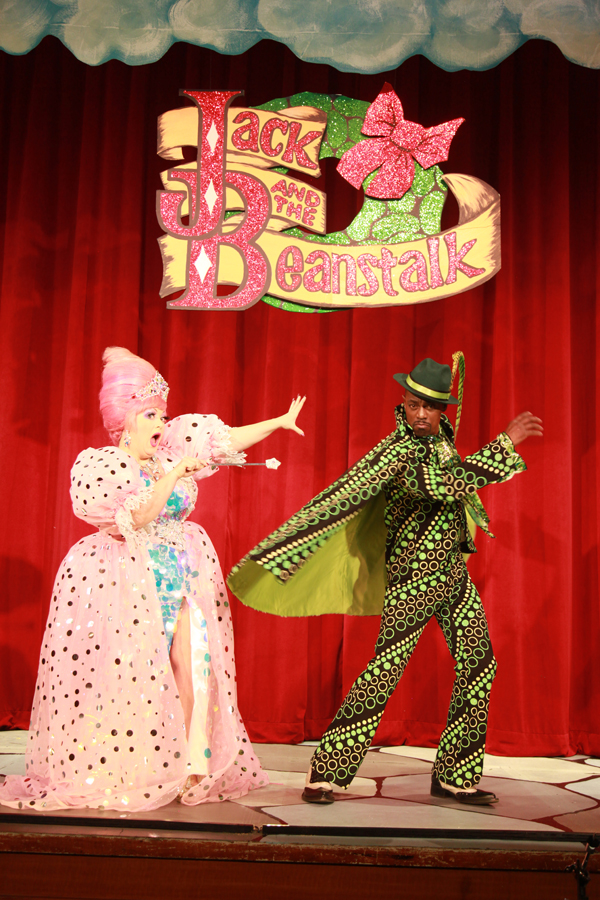
BY TRAV S.D. | In a time when the US and the UK seem to share all manner of pop stars, hit musicals, movies, TV shows, comedians and best-selling authors, it may be a surprise to learn that there has been at least one uncrackable nut when it comes to the transatlantic cross-fertilization of cultural product — the Christmas Pantomime, or Panto. This centuries-old English theatrical form is a much-beloved annual holiday tradition in the Mother Country and many of her former colonies (and quite different, it must quickly be pointed out, from the much-reviled silent clowning we know in the States as “mime”).
For a brief time in the mid-19th century, Panto was popular in New York City, thanks to a beloved comedian named George L. Fox. After Fox passed from the scene, though, so did the Panto as a popular pastime in America. Until 2017. Starting December 6, audiences will have a rare chance to be entertained by this enchanting import when “Jack and the Beanstalk” opens at Abrons Arts Center. And if the rarity of the occasion weren’t enough of an attraction, the show is adapted, produced, and directed by local showbiz royalty, the Beauty and the Beast themselves, husband and wife team Mat Fraser (“American Horror Story: Freak Show”) and international burlesque star and choreographer Julie Atlas Muz, with a cast that includes Downtown performance legends Dirty Martini, drag star Michael Lynch (here billed as Michael Johnnie Lynch), and comedian Matt Roper (best-known for his character Wilfredo).
A major key to the appeal of Panto is that it speaks to both old and young. The shows are ostensibly for children (even very young ones), but with an added, coded layer only adults will appreciate. The stories are normally well-known fairy tales, with villains the audience is encouraged to boo and hiss at, heroes to cheer for, and lots of musical numbers, puppets, and animal costumes. At the same time, there are subtly transgressive elements, such as double entendres for the grown-ups to laugh at (but delivered so as to go over the children’s heads), and the gender-bending characters of the Pantomime Dame (a male in female drag, usually a well-known celebrity) and the Principal Boy (a female playing a young male). Some manifestations of these characters have made it to American shores. Australian drag comedian Dame Edna (Barry Humphries) is an outgrowth of the tradition and often stars in Pantos; and the stage and screen character Peter Pan is normally cast in the Principal Boy tradition (almost always played by a woman).
“I grew up watching Panto,” said the English-born Fraser, who adapted the script from traditional sources. “Both of my parents are actors. I grew up seeing them perform in Pantos, and my stepmother is an expert on it. She’s quoted in several books. Doing a Panto has always been on my bucket list.”
While Panto is thought of as a quintessentially British form of entertainment, Fraser and Muz quickly realized that a workable transplantation would require some adjustments.
“Panto is primarily a celebration of your community,” explained Fraser. “In this production, our job has been to Americanize it.”
“And to New Yorkify it,” added director Muz. “For the form to be as successful as it is in the UK you have to create the romantic feeling in the audience that this is their home.”

Onstage jump ropes, basketballs, and fire hydrants help generate a native Lower East Side atmosphere. Many in the cast, including the producers and Jenni Gil (who plays the lead character Jack), live near Abrons Arts Center, or are the product of its arts programs, or both. “Jenni is the voice of the neighborhood,” said Muz. “The journey belongs to Jack.”
In addition, an outsider perspective definitely forms a key element in how the show was conceived and cast. The name of the Fraser/Muz production company “ONEOFUS” references the 1932 horror movie “Freaks” (“We accept her! One of us! Gooble gobble, gooble gobble!”). Fraser may be the best-known disabled (his preferred term) performer in the world. Born with Thalidomide-induced phocomelia (manifested in his case in underdeveloped arms), he first made his name as a drummer in a number of rock bands, which naturally migrated into acting and variety entertainment. Fraser plays drums in the show (what would music hall gags be without rim shots?), and the cast also features short-statured actress Sarah Folkins. Dirty Martini, who plays the Good Fairy, is widely revered for being a pioneer in redefining popular conceptions of female beauty. People of color and LGBTQ performers are well-represented. And in Panto, there is the traditional element of cross-dressing, with Gill as Principal Boy in the role of Jack, and Michael Lynch as a hilarious Dame Delancey.

“While we honor tradition, the form itself is kind of in the Dark Ages about what men and women do in the story,” Fraser elaborated. “But we didn’t want a world where a woman just gets rescued. This is the post-“Frozen” era. So Jack and his love interest Rosie (Christina Duryea) are equal warriors in our version. And it’s all about collective action. The whole community chops down the beanstalk.”
If the words burlesque, drag, and sideshow give you pause in this context, the producers are quick to point out that they’re all branches of the same theatrical family — ones with more similarities than differences. Matt Roper, who plays Silly Simon, is like Fraser, now a second-generation Panto performer (his father was British comedian George Roper). He brings a tone of sweetness and innocence to his performance, which is, as Fraser points out, the key to successful Panto. And a chorus of talented local kids are part of the 22-person cast.
“What shines most brightly is the joy of childhood,” said Muz. “That’s the most important element in this.”
Previews: Wed.–Fri., Dec. 6–8 at 7:30pm and Sat., Dec. 9 at 2pm & 7:30pm. Opening Sun. Dec. 10 at 2pm. Regular performances Dec. 14–16 & 20–23 at 7:30pm; Dec. 16, 17, 23 at 2pm. At Abrons Arts Center (466 Grand St., btw. Pitt & Willett Sts.). For tickets ($25–$45), call 212-352-3101 or visit abronsartscenter.org.

















